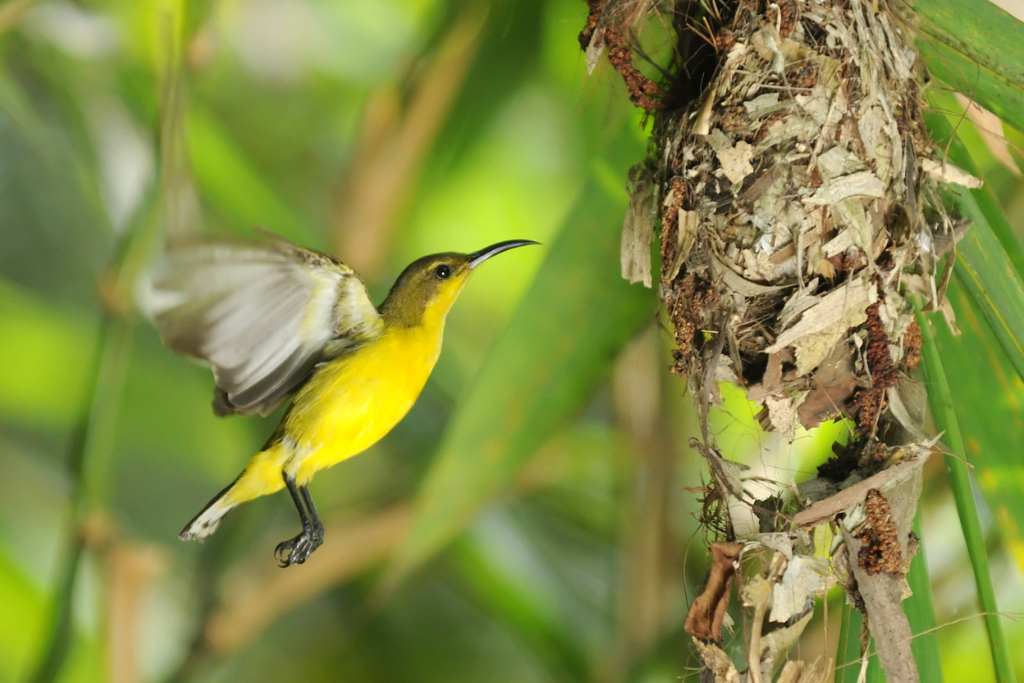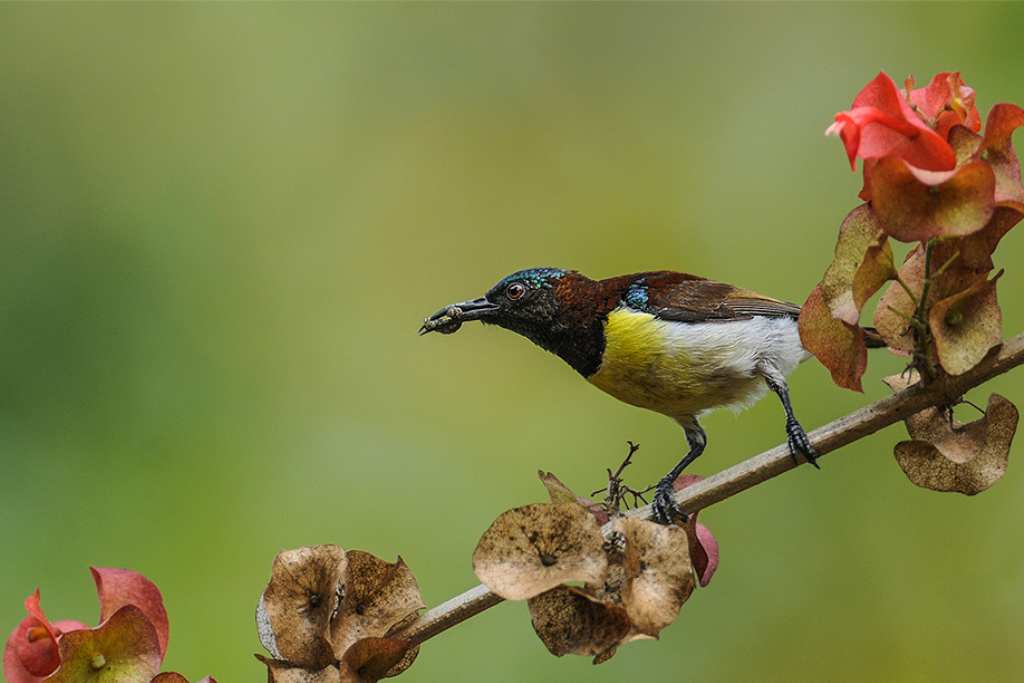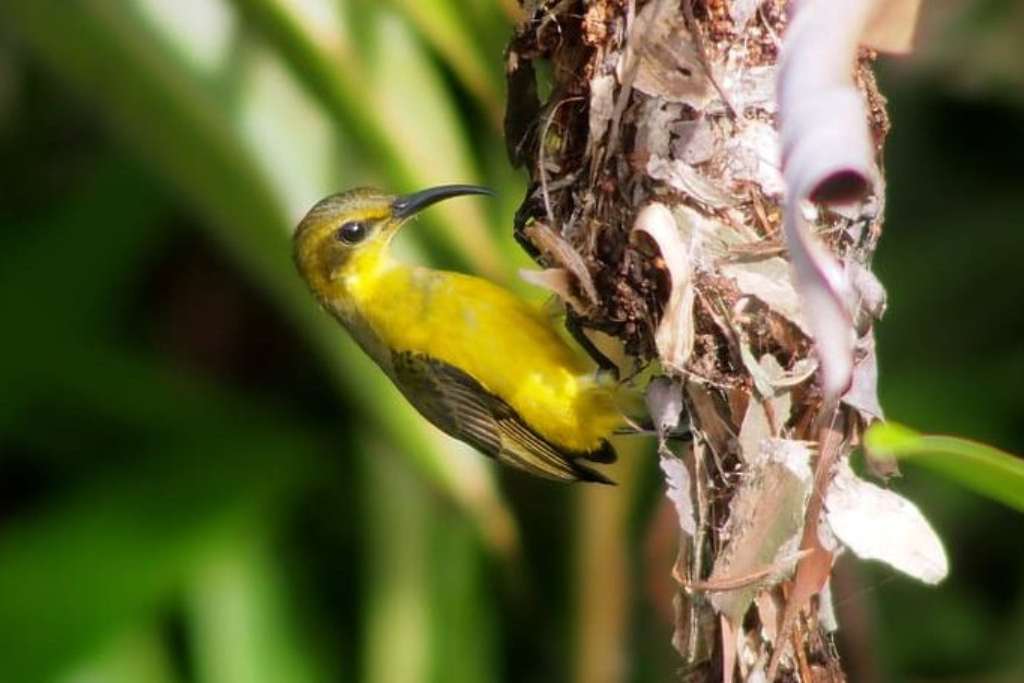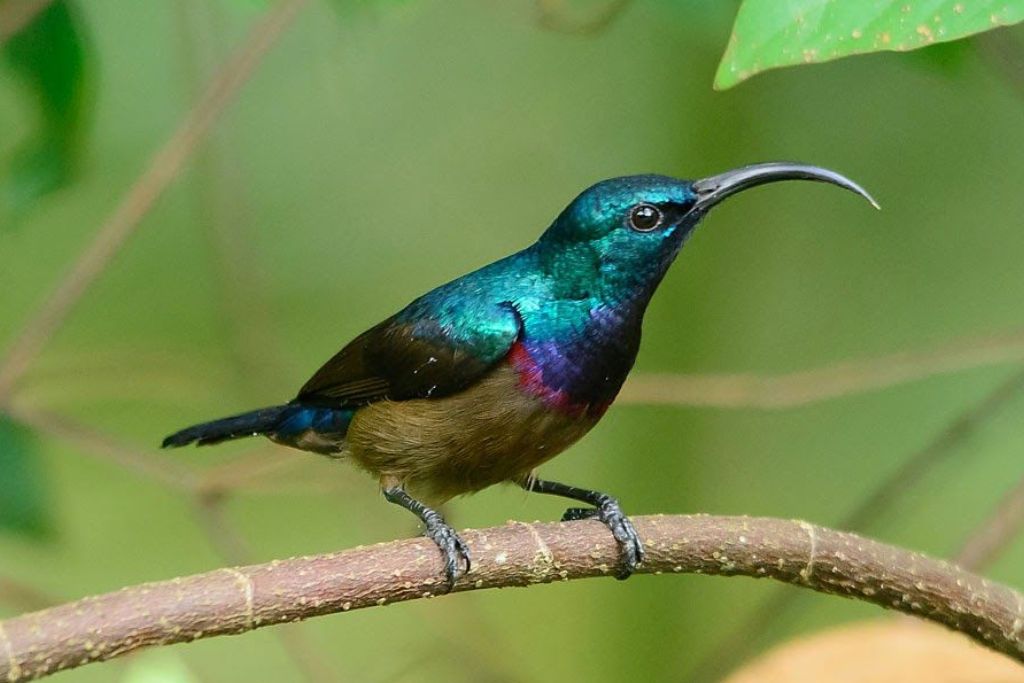Welcome to the beautiful world of sunbirds, where their bright colors and beautiful songs go well together. People who like birds are amazed by what these tiny birds can do. There are many places around the world where you can find them. Sunbirds have learned to live in many different kinds of places, from humid rainforests to dry deserts. In this blog post, we’ll look at the fascinating ways these jewels with feathers adapt to their surroundings and find out what benefits come from their amazing abilities. So sit back, relax, and let’s take a trip through nature’s kaleidoscope as we learn how sunbirds live in different places.
Habitat
Sunbirds inhabit forests, shrubby grasslands, and even some cultivated gardens. They often fly on the ground or perch in trees. Their chattering warbles and whistles are often melodious. Some, like the savannah-like sunbird and the splendid sunbird, sing from prominent perches. The 105 species of sunbirds range across Africa, South and Southeast Asia, and New Guinea. Many have small, restricted ranges and are considered vulnerable or endangered.

Studies of sunbird behavior and ecology have found that they match their preferences to the traits of the plants they feed on. For example, East African sunbirds feeding on the mint Leonotis nepetifolia experienced great variation in nectar volume within a single inflorescence; they patterned their foraging by rejecting flowers that had been probed previously and visiting those with higher volumes. This reduced their total foraging time and increased their nectar intake by 25%. The same pattern was found for sunbirds foraging on the long-tubed flowers of Cape Flora.
Feeding
With 145 species worldwide, sunbirds live in many habitats, from tropical rainforests to savannahs and mountain forests. They are surprisingly adaptable, moving into human-modified landscapes such as gardens and urban parks.
They feed on nectar and other invertebrates, including spiders and fruit. Insects make up about half of most species’ diets. Their long, down-curved beaks and brush-tipped, tubular tongues are adapted to probing flowers for nectar. Like hummingbirds, sunbirds may hover to drink from flowers; they also take their food on the wing.

Sunbirds are often found in pairs or family groups, and they may be very social birds, feeding together or joining mixed-species groups in forest canopies to forage. In addition to pollinating, they also disperse the seeds of some plants. They sometimes rob flower tubes that bees and butterflies cannot reach through their long proboscises, such as the curved tubes of proteas in the South African fynbos biome. These behaviors have been referred to as “flower robbing.” Some flowers, such as the tube-shaped Aloe vera, have evolved to be lock-and-key fits for sunbirds’ down-curved bills, enabling them to sip the contents of such flowers without being pollinated—a process called “prick-and-steal.” (The same phenomenon is observed with some flies.)
Nesting
To nest, sunbirds require a suitable area within which to build a cup-shaped structure that resembles a miniature hummingbird wing. These structures are shaped in part by the bird’s body and wings, but also by its long, tube-like tongue. Sunbirds are primarily nectar feeders, but they also supplement their diet with insects and fruit.

Sunbirds can recognize subtle variations in the amount of nectar that flowers produce. To maximize foraging efficiency, they systematically visited flowers with higher-than-average volumes and avoided those with low quantities of nectar.
Sunbirds have short, downward-curving bills with a brush-tipped tubular tongue adapted for nectivory. They pierce flower tubes, like those of gladioli and South African plants, to access the nectar inside. In one study, long-billed Malachite Sunbirds (Nectarine famosa) were found to regularly pierce the bases of plants with long corolla tubes, while shorter-billed Southern Double-collared Sunbirds were unable to do so. This is an example of convergent evolution, whereby unrelated species develop similar features in response to shared environmental challenges.
Breeding
Sunbirds live mainly on nectar, but also eat insects and berries. Insects are important for rearing chicks, and fruits provide a high-energy alternative to nectar. They fly quickly and close to the ground, catching prey on the wing or perching in bushes or trees.

The genus Nectariniidae includes 145 species. They can be found in tropical forests, inland wetlands and savannahs, wooded grasslands, riparian areas, villages, and gardens. Some species breed seasonally; others migrate to the north or south for part of the year.
Males of many species put on elaborate displays to attract mates and defend their territories. Their plumage can be iridescent or drab, with combinations of green, purple, blue, and red, while females are more drab and less conspicuous. Outside the breeding season, males of some species molt to a more drab plumage, resembling females and making them less visible to predators. Predation is a major cause of nestling and egg mortality for sunbirds. Snakes, lizards, and birds of prey are common predators.
If you want to make sure your pet mouse is safe and healthy in your home, it’s important to be proactive. Find out more about “How to Keep a Mouse Safe and Healthy in Your Home” to keep your furry friend safe and healthy.
